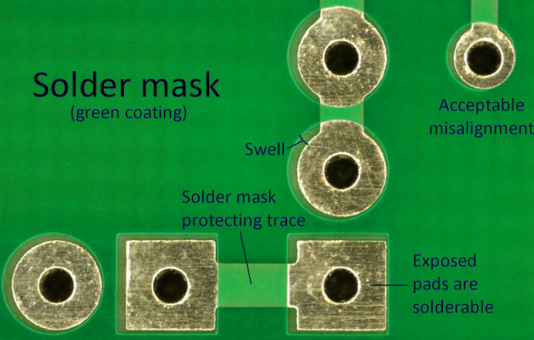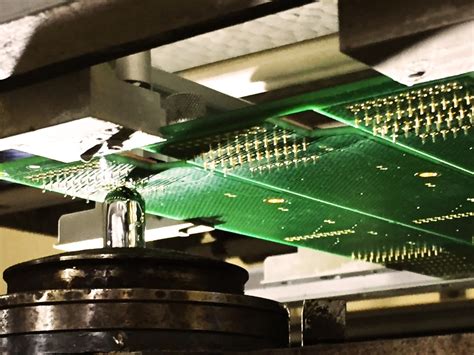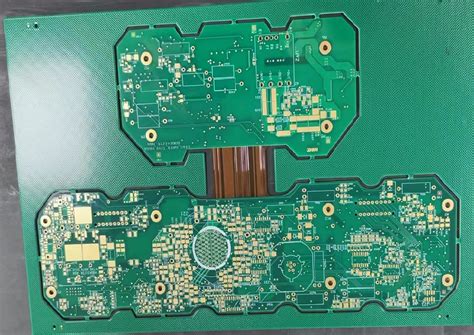The Comprehensive Guide to PCB Mask: Types, Applications, and Selection Criteria
Introduction to PCB Mask
Printed Circuit Board (PCB) mask is an essential component in the manufacturing and protection of electronic circuits. These specialized coatings serve as protective layers that shield the copper traces and other sensitive components from environmental factors, physical damage, and chemical corrosion. PCB masks play a critical role in ensuring the reliability, durability, and performance of electronic devices across various industries.
The importance of PCB masks cannot be overstated in modern electronics manufacturing. As electronic devices become smaller and more complex, the demands on PCB protection have increased significantly. A properly applied mask can mean the difference between a product that lasts for years and one that fails prematurely due to environmental stress or accidental damage.
This comprehensive guide will explore the different types of PCB masks, their applications, selection criteria, application processes, and recent advancements in mask technology. Whether you’re an electronics engineer, PCB designer, or manufacturing professional, understanding PCB masks is crucial for creating reliable electronic products.
Types of PCB Masks
Solder Mask
Solder mask, also known as solder resist, is the most common type of PCB mask. This permanent polymer layer is applied to the copper traces of a PCB to prevent solder bridges from forming between closely spaced solder pads during the soldering process. Solder masks also provide protection against oxidation and environmental contaminants.
There are several varieties of solder masks available:
Liquid Photoimageable Solder Mask (LPSM): Applied as a liquid coating and then exposed to UV light through a photomask to create the desired pattern. LPSM offers excellent resolution and is suitable for fine-pitch components.
Dry Film Solder Mask: Comes in sheet form and is laminated onto the PCB surface before being exposed and developed. Dry film masks provide uniform thickness and are often used for high-density interconnects.
Topside and Bottom-side Masks: Applied to either one or both sides of the PCB depending on the design requirements.
Solder masks are typically green in color, though other colors (red, blue, black, white, etc.) are available for aesthetic or functional purposes. The choice of color can affect the visibility of components during assembly and inspection.

Peelable Mask
Peelable masks are temporary protective coatings designed to shield specific areas of the PCB during certain manufacturing processes, particularly selective soldering or plating operations. These masks can be easily removed by peeling after they’ve served their purpose.
Key characteristics of peelable masks include:
- Temporary protection during wave soldering or chemical processes
- Easy removal without leaving residue
- Compatibility with various PCB materials
- Resistance to high temperatures during soldering
Peelable masks are particularly useful for protecting gold fingers, connectors, or other sensitive areas that shouldn’t be exposed to solder or plating chemicals.
Conformal Coating
Conformal coatings are thin polymeric films applied to completed PCBs to protect against moisture, dust, chemicals, and temperature extremes. These coatings “conform” to the shape of the components and board, providing comprehensive protection.
Common types of conformal coatings include:
Acrylic (AR): Easy to apply and remove, good moisture resistance
Silicone (SR): Excellent high-temperature performance and flexibility
Urethane (UR): Superior chemical and abrasion resistance
Epoxy (ER): Hard, durable coating with excellent moisture resistance
Parylene (XY): Vacuum-deposited coating offering superior protection
Conformal coatings are typically used in harsh environment applications such as automotive, aerospace, marine, and industrial electronics.
Carbon Ink Mask
Carbon ink masks serve both protective and functional purposes. These conductive coatings are used to create contact surfaces for buttons, switches, and other interface elements on PCBs.
Features of carbon ink masks include:
- Electrical conductivity
- Wear resistance for frequently touched surfaces
- Compatibility with various substrate materials
- Customizable resistance properties
Carbon ink masks are commonly found in membrane switches, remote controls, and other devices requiring durable conductive surfaces.
Applications of PCB Masks
Protection Against Environmental Factors
One of the primary functions of PCB masks is to protect the board and its components from environmental stressors:
Moisture Protection: Masks prevent moisture absorption that can lead to corrosion, dendritic growth, and electrical leakage. Conformal coatings are particularly effective in humid environments.
Chemical Resistance: Many masks protect against corrosive chemicals encountered in industrial or automotive applications, including fuels, cleaning solvents, and process chemicals.
Dust and Contaminant Protection: Masks create a barrier that prevents the accumulation of dust, dirt, and other particulates that could cause short circuits or affect thermal performance.
UV and Ozone Protection: Certain masks include additives that protect against UV degradation and ozone exposure, which can be particularly important for outdoor applications.
Electrical Insulation
PCB masks provide critical electrical insulation:
Preventing Short Circuits: By covering copper traces, masks prevent accidental contact with conductive materials that could cause shorts.
High Voltage Insulation: Specialized high-voltage masks are designed to withstand significant potential differences between conductors.
Reducing Leakage Current: Quality masks minimize surface leakage currents that could affect circuit performance, especially in high-impedance circuits.
Soldering Process Control
During PCB assembly, masks play several important roles:
Solder Bridge Prevention: Solder masks maintain separation between adjacent pads, preventing unintended connections during soldering.
Solder Damming: Masks contain solder flow to specific areas, ensuring proper joint formation and preventing excess solder from spreading.
Surface Tension Control: The properties of the mask material influence how molten solder behaves, affecting joint quality and appearance.
Aesthetic and Identification Purposes
Beyond functional roles, PCB masks serve visual purposes:
Color Coding: Different mask colors can indicate board revisions, assembly variants, or functional areas.
Branding: Custom colors and logos can be incorporated into the mask for product identification.
Legibility: Contrast between mask color and silkscreen aids component identification and assembly.

Selection Criteria for PCB Masks
Choosing the appropriate PCB mask requires careful consideration of multiple factors:
Environmental Considerations
Operating Temperature Range: The mask must withstand both the expected operating temperatures and any process temperatures encountered during manufacturing.
Chemical Exposure: Consider what chemicals the board might encounter in its application environment.
Outdoor vs. Indoor Use: Outdoor applications may require enhanced UV resistance.
Humidity Levels: High-humidity environments demand superior moisture resistance.
Electrical Requirements
Dielectric Strength: The mask must provide adequate insulation for the voltages present on the board.
Surface Resistivity: Important for high-impedance circuits where leakage current could be problematic.
High-Frequency Considerations: Some masks have better high-frequency characteristics than others.
Manufacturing Considerations
Compatibility with PCB Materials: The mask must adhere well to the substrate material (FR-4, polyimide, etc.).
Curing Requirements: Consider whether thermal curing or UV curing is more practical for your manufacturing process.
Resolution Requirements: Fine-pitch components may require high-resolution mask application.
Repairability: Some masks are easier to rework or repair than others.
Cost and Availability
Material Costs: Different mask types vary significantly in price.
Application Costs: Some masks require specialized equipment for application.
Lead Times: Specialty masks may have longer procurement times.
Application Processes
Solder Mask Application
The solder mask application process typically involves several steps:
- Surface Preparation: The board is cleaned to ensure proper mask adhesion.
- Application: The mask material is applied via screen printing, spray coating, or curtain coating.
- Pre-drying: The coating is partially dried to prepare for imaging.
- Exposure: UV light is shone through a photomask to cure the desired areas.
- Development: Uncured mask is removed using a chemical solution.
- Final Cure: The remaining mask is fully cured, typically with heat.
Conformal Coating Application
Conformal coatings can be applied through various methods:
Brushing: Manual application for low-volume or rework situations
Spraying: Either manual or automated for medium to high volume
Dipping: The entire board is immersed in coating material
Selective Coating: Automated systems coat specific areas while masking others
Vapor Deposition: Used for parylene coatings in vacuum chambers
Quality Control and Inspection
After application, masks must be inspected for:
Coverage: Ensuring all required areas are properly covered
Thickness: Verifying the coating meets specified thickness requirements
Adhesion: Checking that the mask properly bonds to the substrate
Curing: Confirming complete curing of the mask material
Defects: Identifying bubbles, pinholes, or other imperfections
Recent Advancements in PCB Mask Technology
Nano-coatings
Recent developments in nanotechnology have led to ultra-thin protective coatings that offer superior protection while adding minimal thickness. These coatings are particularly valuable for miniaturized electronics where space is at a premium.
UV-Curable Masks
New formulations of UV-curable masks offer faster processing times and reduced energy consumption compared to thermal-cure alternatives. These materials also typically contain fewer volatile organic compounds (VOCs), making them more environmentally friendly.
High-Thermal-Conductivity Masks
For power electronics and high-current applications, new mask materials with enhanced thermal conductivity help dissipate heat while still providing electrical insulation.
Environmentally Friendly Formulations
In response to environmental regulations and sustainability initiatives, manufacturers have developed masks with:
- Reduced VOC content
- Halogen-free formulations
- Bio-based materials
- Improved recyclability
Smart Masks
Emerging technologies include masks with functional capabilities beyond simple protection:
Self-healing Masks: Materials that can repair minor damage automatically
Thermally Adaptive Masks: Coatings that change properties with temperature
Conductive Masks: For EMI shielding or integrated antenna applications
Conclusion
PCB masks are indispensable elements in modern electronics manufacturing, serving critical protective, insulating, and manufacturing-control functions. From the ubiquitous solder mask to specialized conformal coatings, these materials ensure the reliability and longevity of electronic devices across countless applications.
Selecting the appropriate mask requires careful consideration of environmental conditions, electrical requirements, manufacturing processes, and cost factors. As electronic devices continue to evolve, so too does mask technology, with new materials and application methods emerging to meet the demands of next-generation electronics.
Understanding PCB masks—their types, applications, and selection criteria—empowers engineers and manufacturers to make informed decisions that enhance product quality and reliability. Whether designing consumer electronics, automotive systems, or aerospace components, the proper PCB mask can significantly impact the performance and durability of the final product.
As we look to the future, ongoing advancements in mask technology promise even greater protection, functionality, and environmental sustainability, ensuring that PCB masks will continue to play a vital role in electronics manufacturing for years to come.






